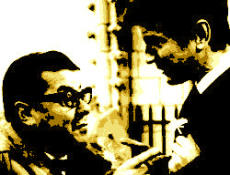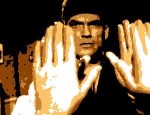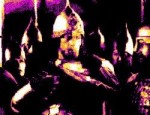Film Review

Having on board enough comedy heavyweights to sink the entire French navy, Les Compagnons de la marguerite is easily one of Jean-Pierre Mocky's funniest films. There's no shortage of mischief but little of the malice that would creep into his later comic offerings. Claude Rich is at his comedic best as a forger with the potential to make divorce (and divorce lawyers) a thing of the past, pursued doggedly (or should that be wolfily?) by Francis Blanche, France's most inept police inspector, who is named Leloup and can therefore justify howling like a wolf whenever things go wrong. Michel Serrault makes an amusing debut in Mocky's manic universe and Rich's wife has her first screen credit, as Catherine Darcy. Michael Lonsdale and Jean Tissier put in an appearance, respectively near the start and end of their careers, and Mocky's reverence for the cinema heroes of the past is evident elsewhere in the credits: editing was by Marguerite Renoir, cinematography by Léonce-Henri Burel and Henri Diamant-Berger is named as a production associate.
Les Compagnons de la marguerite is classic Mocky and features some of the director's funniest set-piece gags. The sequence in which the police round up anyone wearing a daisy (including a scout leader) in the vicinity of Notre-Dame Cathedral is only a taster for what is to come. Ever wonder how pigeon numbers are controlled in Paris? Mocky has the answer: the police catch them, roast them and eat them! Francis Blanche's attempts to catch Claude Rich en flagrant délit become increasingly hilarious and culminate with him disguising himself as a bride in a fetching wedding dress - it has to be seen to be believed. Mocky was inspired to make the film having gone through the messy and expensive process of a divorce himself. It's surprising that his proposal for an amicable, cost-effective alternative has never caught on - or maybe it has...?
© James Travers, Willems Henri 2014
The above content is owned by frenchfilms.org and must not be copied.
Film Synopsis
An expert in restoring old manuscripts at the National Library, Jean-Louis Matouzec is not a happily married man, but his wife Françoise refuses to give him a divorce. One day, he has a brainwave: to find another unhappily married couple who would be prepared to swap partners. The man would marry Françoise and the woman would become Matouzec's new wife. Matouzec can then pop along to the town hall and use his own particular skills to falsify the entries in the wedding registry. To find such a couple, Matouzec places an ad in the local newspaper. So that the two couples can recognise one another, they must each wear a daisy. When the local police department comes across the ad they mistakenly believe that a new gang of crooks is about to be formed, so Inspector Leloup is assigned to start an investigation. A short while later Leloup is surprised when his wife leaves him for Matouzec, and is even more surprised when Françoise turns up to take his wife's place...© James Travers
The above content is owned by frenchfilms.org and must not be copied.
Similar Films
Here are some other films you may enjoy watching:- Les Copains (1965)
- Candide ou l'optimisme au XXe siècle (1960)
- Mon oncle (1958)
- Parade (1974)
- Allez France! (1964)
Other related links:
Film Credits
- Director: Jean-Pierre Mocky
- Script: Jean-Pierre Mocky, Alain Moury
- Cinematographer: Léonce-Henri Burel
- Music: Gérard Calvi
- Cast: Claude Rich (Jean-Louis Matouzec), Michel Serrault (L'inspecteur Papin), Francis Blanche (L'inspecteur Maurice Leloup), Paola Pitagora (Martine Leloup), Catherine Rich (Françoise Matouzec), Roland Dubillard (Flamand), René-Jean Chauffard (Le commissaire Rudel), Micha Bayard (Paulette Papin), Philippe Brizard (Me Castard), Roger Legris (Le président du tribunal), Rudy Lenoir (L'employé de mairie efféminé), Michael Lonsdale (Lastac), Claude Mansard (Le directeur du journal), Marcel Pérès (Job), Henri Poirier (Le potier polygame), Jean-Marie Robain (Le noble), Jean Tissier (Galoupet, le concierge), Françoise Arnaud (Une femme du potier), Christine Aurel (L'employée du journal), Bruno Balp (Le gendarme)
- Country: France / Italy
- Language: French
- Support: Black and White
- Runtime: 90 min
- Aka: Order of the Daisy
The very best fantasy films in French cinema

The very best period film dramas

The best of American cinema
